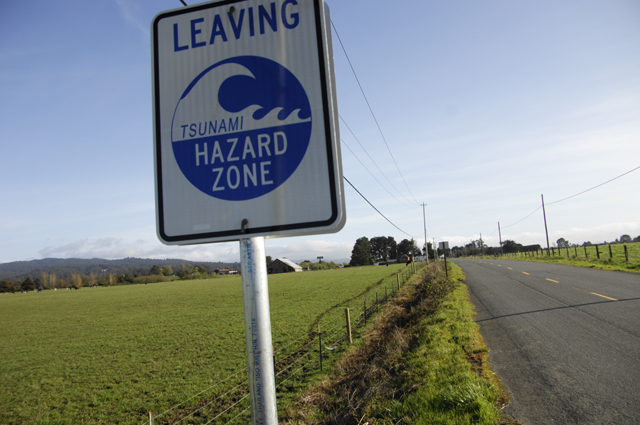
Mar. 20-26, 2011 is Tsunami Awareness and Preparedness Week. Humboldt State University, in cooperation with the California Emergency Management Agency and National Weather Service, will conduct a number of activities to raise public awareness about disaster preparedness.
Although the Tri-County Tsunami Warning Communications Test scheduled for Mar. 23 has been canceled in the wake of the recent tsunami, the Emergency Alert System Test and several related events will continue as planned.
In the spirit of disaster preparedness, community members are also encouraged to visit the Redwood Coast Tsunami Work Group website at http://www.humboldt.edu/rctwg/">http://www.humboldt.edu/rctwg/">http://www.humboldt.edu/rctwg/">http://www.humboldt.edu/rctwg/.
The group was formed in 1996, and from the start its mission has been to mitigate the hazards of earthquakes and tsunamis in Humboldt, Mendocino and Del Norte counties. The interagency group is made up of representatives from local, state and federal agencies, as well as tribes, businesses, land managers and relief and service groups.
Together with Humboldt State University, the group developed tsunami hazard maps for much of the North Coast. From those maps, the group began to plan the placement of the blue and white tsunami hazard signs that dot now the community. As of January 2009, more than 400 signs have been installed, guiding citizens to safety and higher ground.
The group provides access to many other earthquake and tsunami-related resources as well. At the Redwood Coast Tsunami Work Group website, http://www.humboldt.edu/rctwg/">http://www.humboldt.edu/rctwg/">http://www.humboldt.edu/rctwg/">http://www.humboldt.edu/rctwg/, people can find interactive tsunami evacuation maps, disaster preparedness checklists and videos of HSU professor of Geology, Lori Dengler, discussing the importance and proper practice of “Drop, Cover and Hold On.”
For Dengler, preparedness is paramount to reducing harm in the event of a disaster like an earthquake or tsunami. “If you understand the event and you know what to do, you can save yourself,” she says. “The biggest tragedy of the 2004 Indian Ocean tsunami was that, with very few exceptions, no one understood the warning signs that a tsunami could be on its way. If those people had immediately grabbed their kids and gone to higher ground, we would not have seen 130,000 deaths.”
The group’s other projects include evacuation planning, drills and response planning and assistance in the TsunamiReady Program, a National Weather Service tsunami hazard mitigation program.
Related websites
Visit the Redwood Coast Tsunami Work Group at http://www.humboldt.edu/rctwg/">http://www.humboldt.edu/rctwg/">http://www.humboldt.edu/rctwg/">http://www.humboldt.edu/rctwg/.
For tips and information on earthquake and tsunami preparedness, read “Living on Shaky Ground,” at http://www.humboldt.edu/shakyground/.
For more information on the Emergency Alert System Test and other HSU Emergency Operations, visit: http://www.humboldt.edu/emergencymgmtprogram/.
To check on Emergency Conditions at HSU, visit: http://www.humboldt.edu/humboldt/emergency